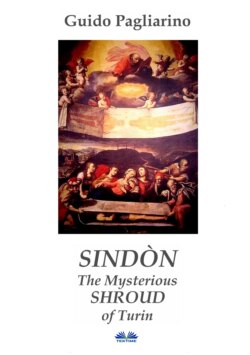Читать книгу Sindòn The Mysterious Shroud Of Turin - Guido Pagliarino - Страница 4
ОглавлениеAUTHOR'S INTRODUCTION
If it is true that the Cloth par excellence has led many people to embrace or rediscover Christianity, a phenomenon called “apostolate through the Shroud”1 , this book is not going to persuade that the Shroud truly wrapped Christ's body two thousand years ago or, as commonly said, that it is authentic. On the other hand, the concept of authenticity could have a different meaning in this context, because you can even believe that the relic preserved in Turin is the shroud which enveloped Jesus' body, but you can simply assume that this sheet is just a two thousand years old item. I suppose that we cannot deny that the Shroud is a very ancient relic, but I do not wish to take a position on the circumstance that it really would wrap the body of Christ. At the moment, there are much evidence to support the hypothesis that it is a very ancient relic rather than the only two against this theory, which are: a) radiocarbon dating experiments on Shroud's samples, which determined the age of the Sheet at lower medieval period (although many Christian scholars express scientific doubts regarding those tests); b) the prejudice, both from anticlerical laity and from most of the Reformed Christians. The first simply neglect the argument, and sometimes they mock it; the Protestant believers, on the contrary, condemn the veneration of the Shroud, which they consider to be a simple “icon” created by human hands: they follow the Old Testament verse “you must not to make for yourself an idol of any kind of image...”, which was historically written down for anti-idolatrous reasons2 .. In this regard, the Catholics argued that this banning existed only before the Incarnation of God in Jesus, when God made flesh and showed himself to the world as an “image”. Moreover, there are Catholics who deny the authenticity of the Shroud as the relic which wrapped the body of Jesus3 . And, on the contrary, there are Protestants who believe it is a genuine 1st century artifact, and sometimes even the real burial cloth of Jesus. In any case, it should be stressed that the Christian faith is not based on the Shroud of Turin but, historically, on the oral testimonials of the Apostles on the Christ's resurrection, collected during the 1st century in the New Testament's books4 ; the work of the Church to match, over the centuries, the new evidence with the oldest one, has allowed to pass them down to us5 . I admit that in the past I was not particularly interested in the Shroud. But in 1998 I met Dr. Giovanni Latino, who was introduced to me by a common friend, and since then I was intrigued and involved by the relic. The passion of Dr. Latino prompted me to attend conferences of experts; and, besides, the weekly meetings arranged by him and the association “Amici della Reale Chiesa di San Lorenzo [Friends of Saint Lawrence Royal Church]” in a room of Saint Lawrence Church during the two years before the 2000 Holy Year Exhibition, aimed at deepening the study and the debate on the Shroud. Later, I became a member of that organization and a volunteer for the Shroud explanation during the Exhibition6 . But my belief is always based on the New Testament's books, not on the Sheet. With that idea in mind, I'm publishing this new edition of my essay about the Shroud, by adding new details and adjustments with respect to the book released years ago and the report I promoted online on the occasion of the 2000 Holy Year Exhibition. This work examines certain topics several times, from different perspectives; and the reader should not consider those repetitions as redundant and unintended.
The essay presents:
a general introduction (although some insights are already inside, such as the medical conclusions by the pathologist Pierluigi Baima Bollone);
a section in chapters, with detailed discussion about the topics introduced in the first part (for example, the photographs of the Shroud); and finally a chronology.
